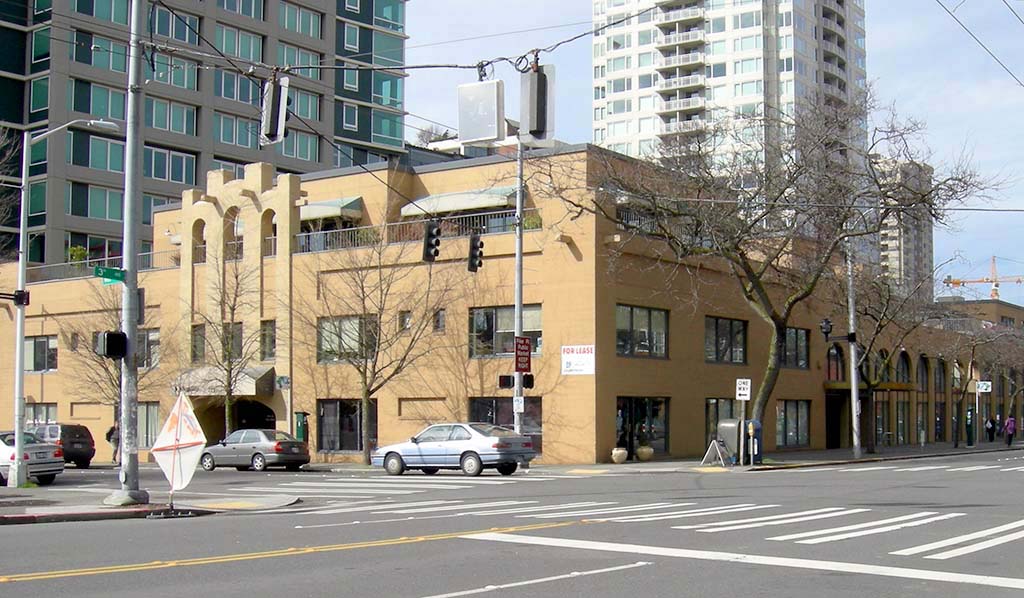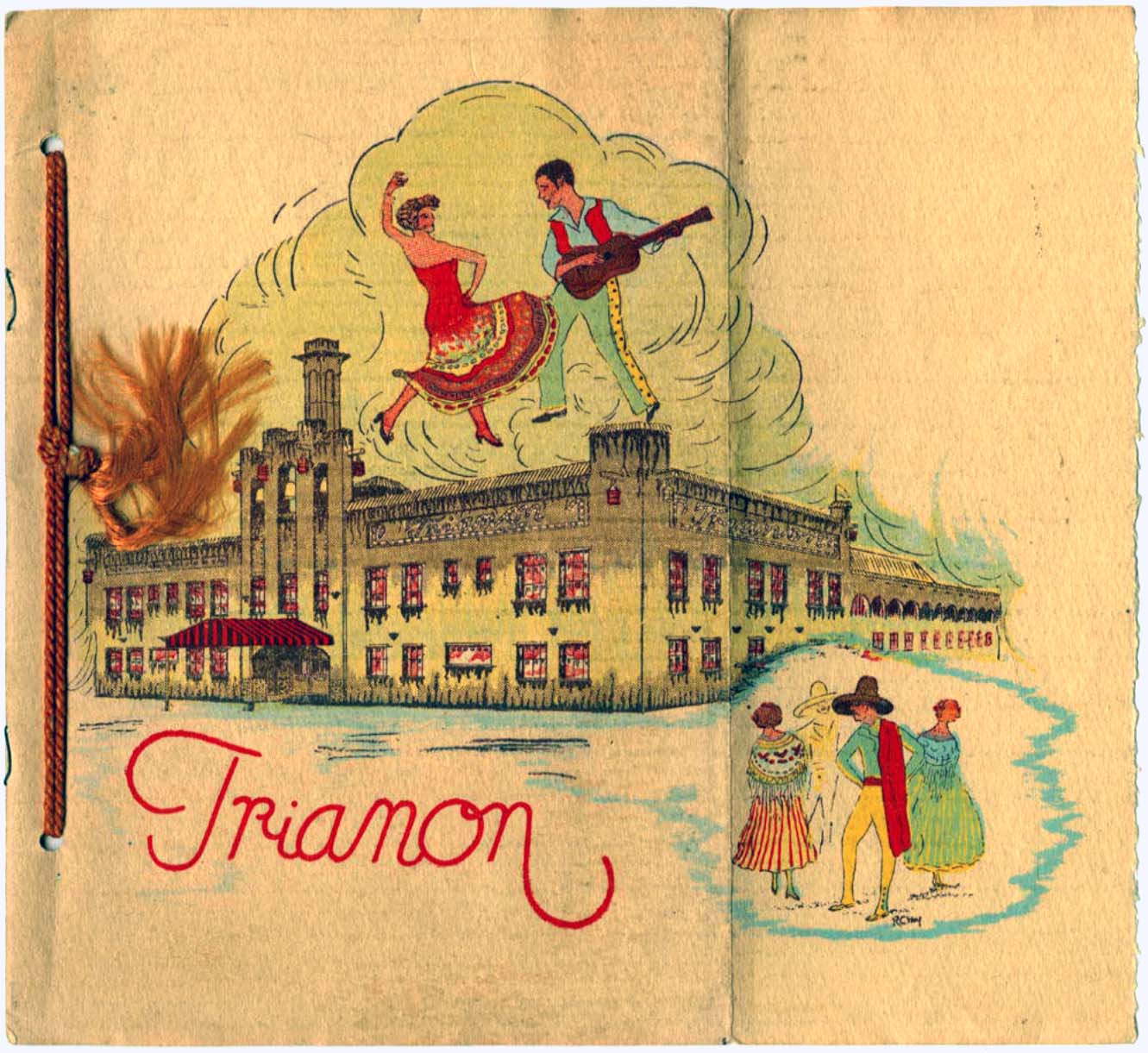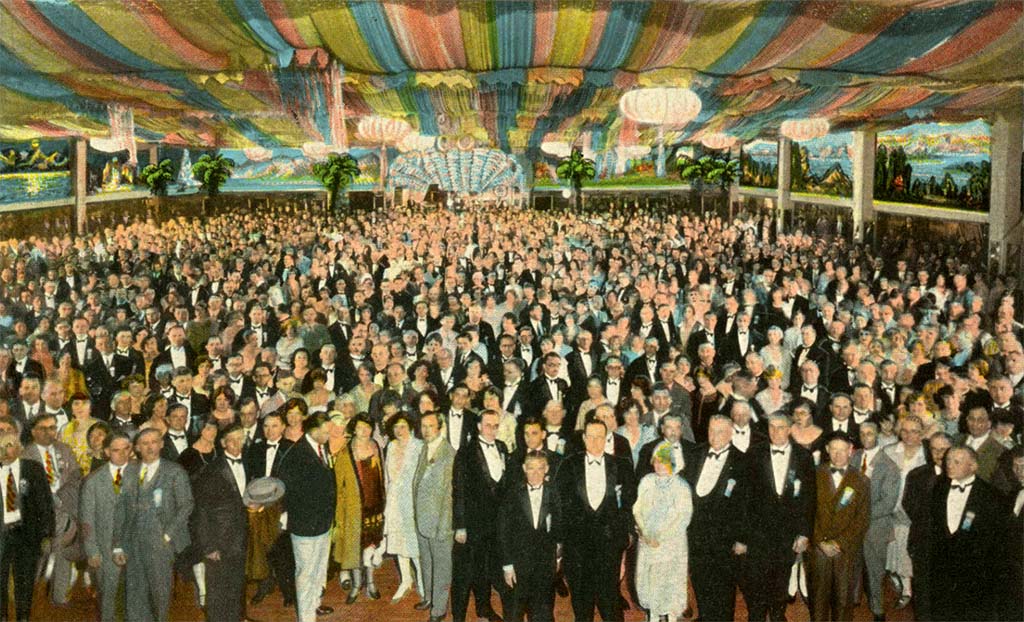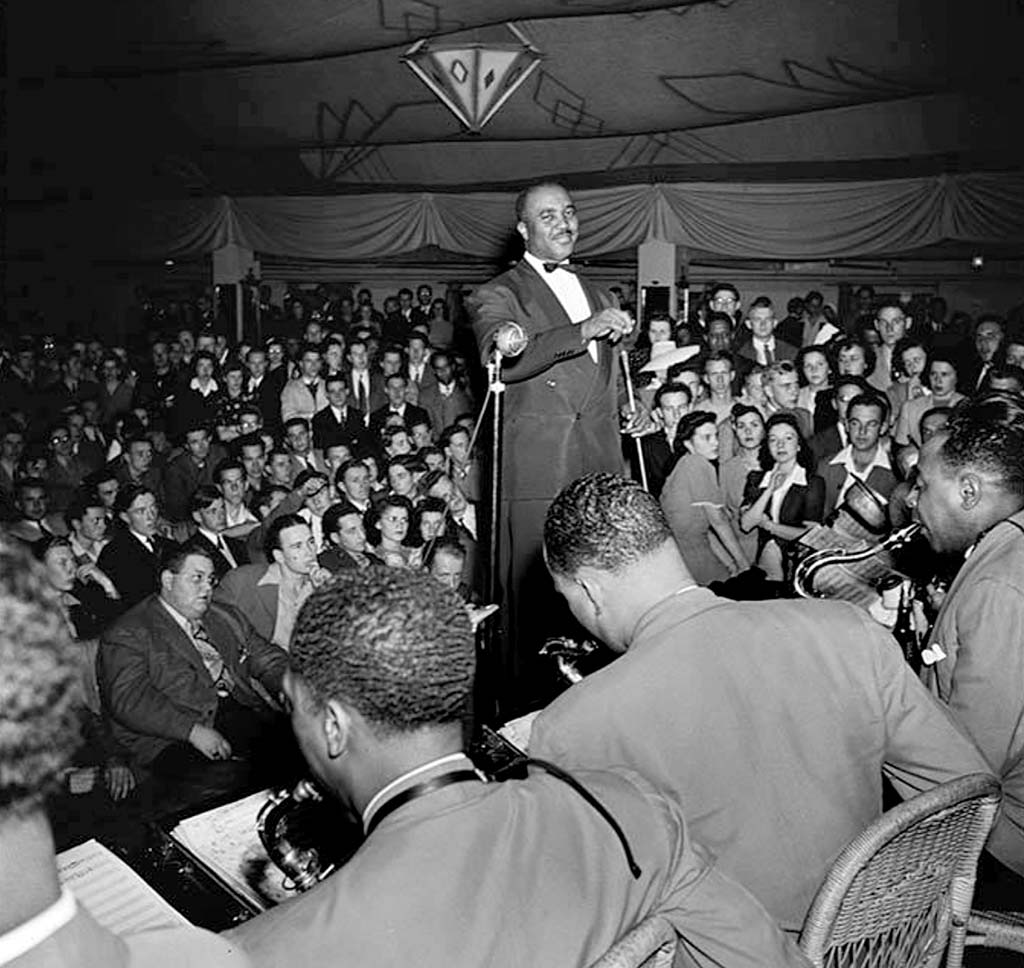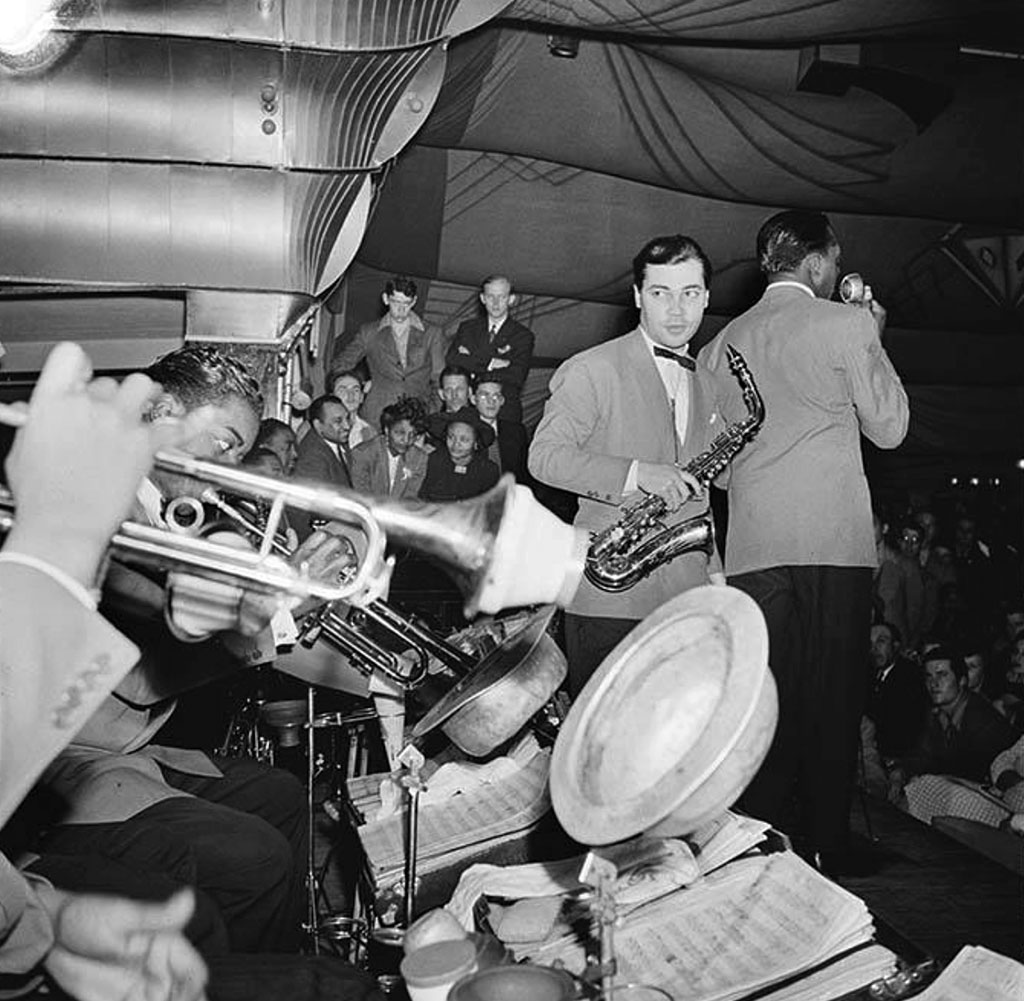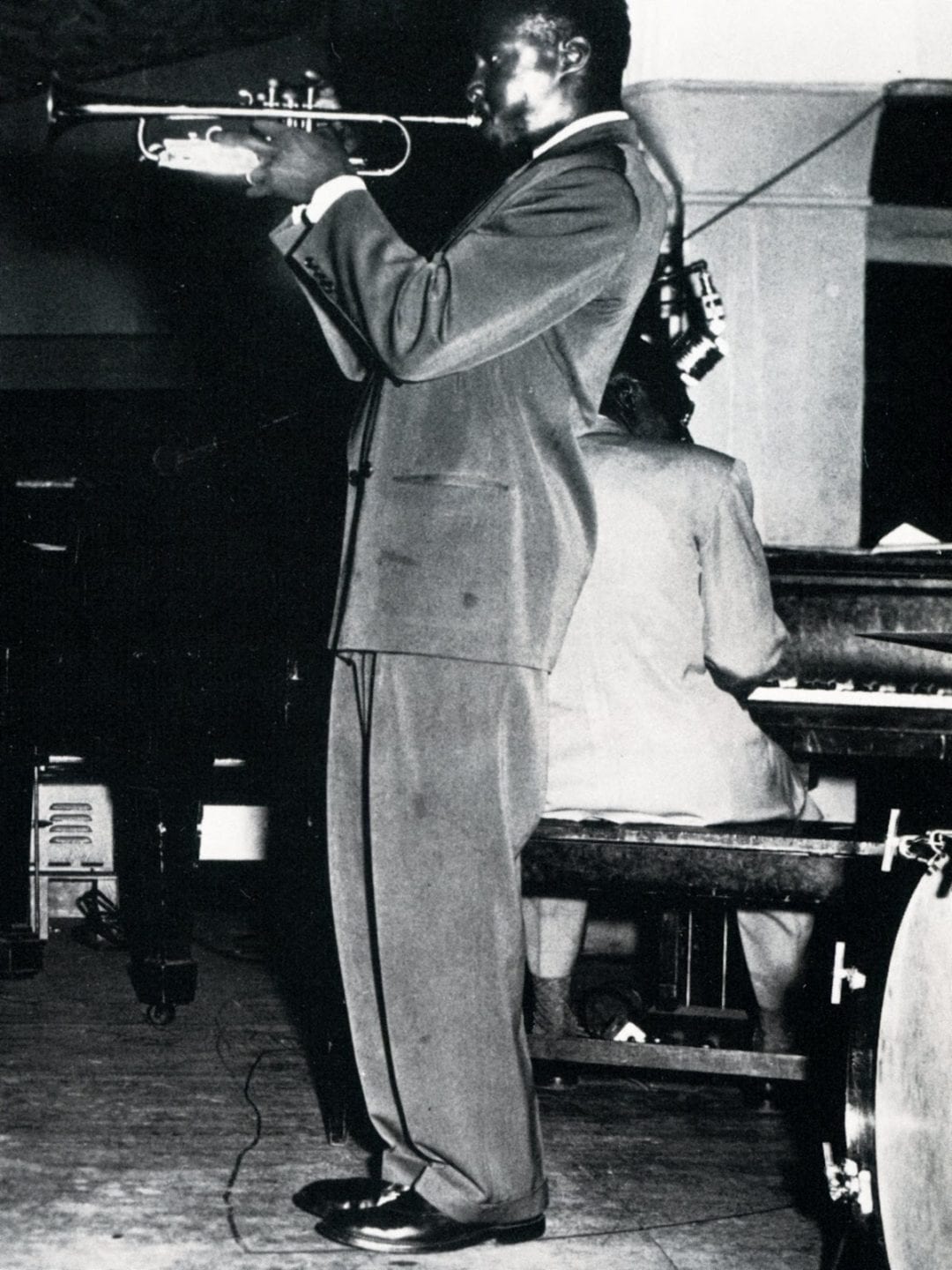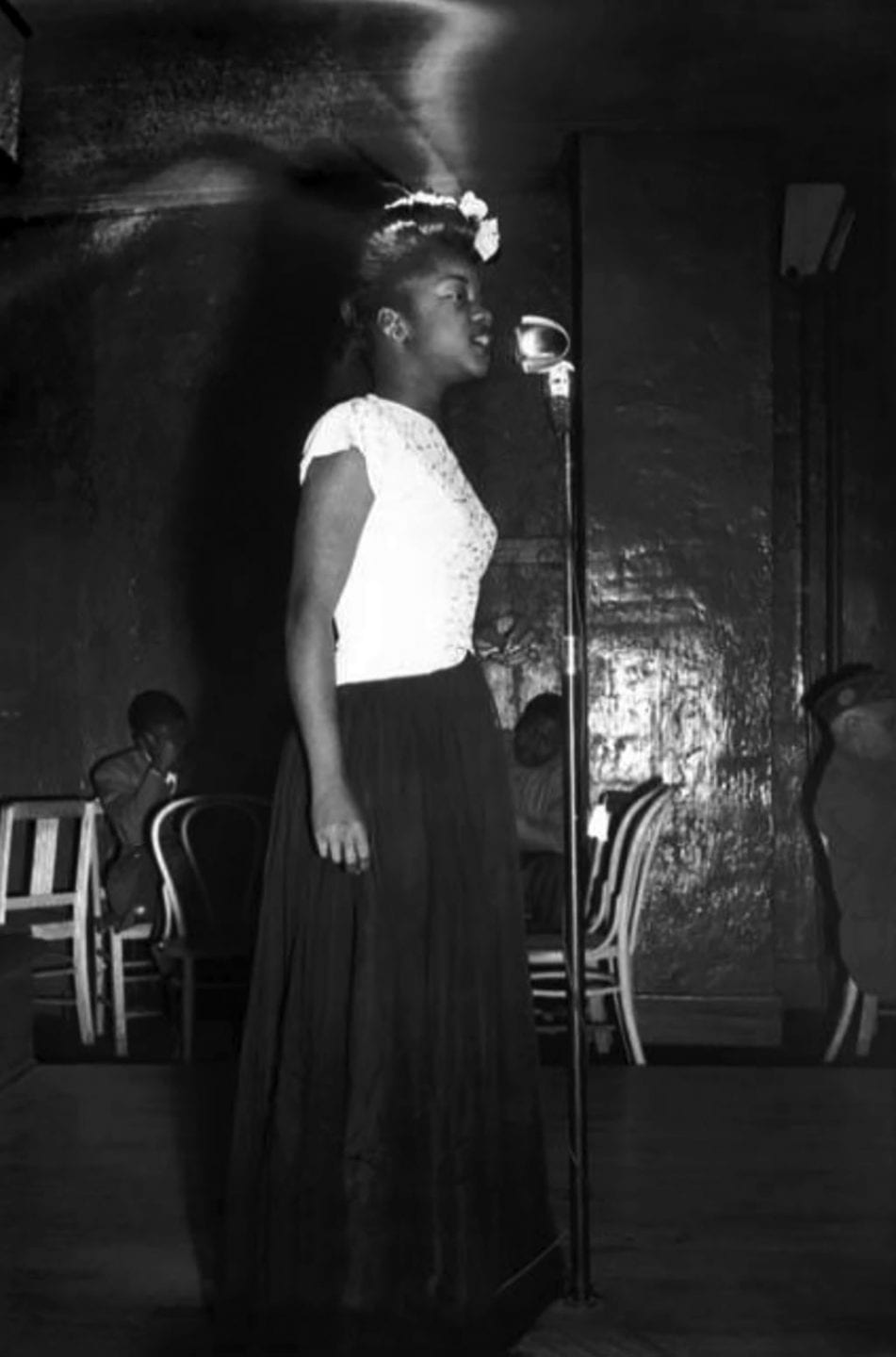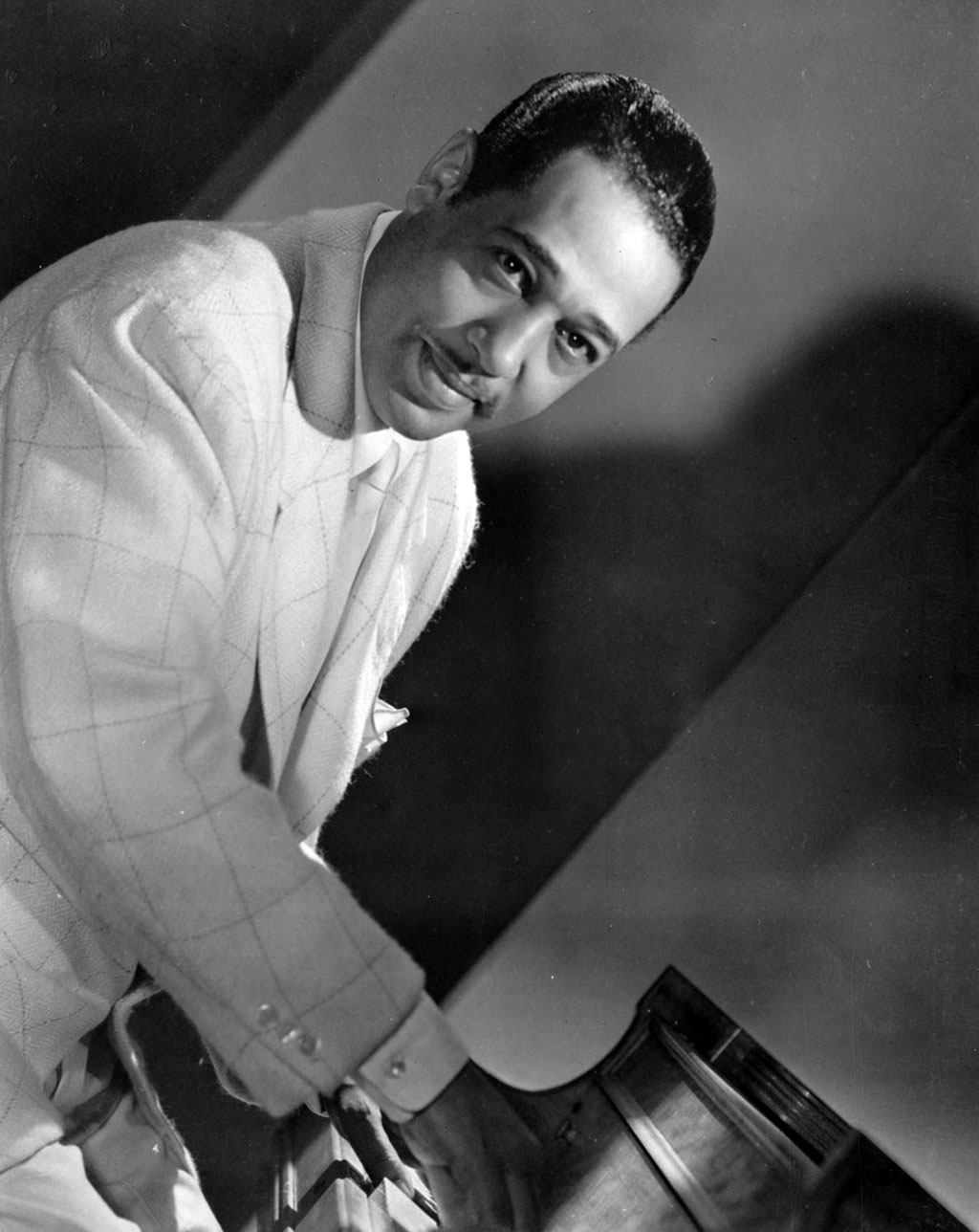-
Trianon Ballroom
3rd Avenue and Wall Street
3rd Avenue and Wall Street
The low tan structure on the northwest corner of 3rd and Wall is our next stop.
For many Seattleites, one of the most fun places in the city was located two blocks north of Bell Street: The Trianon Ballroom. The Mediterranean-style dance hall had room for 5,000 dancers, plus a secluded balcony, good for the “interests of a little romantic action,” noted longtime manager Ted Harris. So many people took advantage of the space that Harris called the Trianon “Cupid’s headquarters.”
As a premier showcase for Big Bands, jazz, and swing in the 1930s and 1940s, the Trianon was the place to see everyone from Louis Armstrong to Duke Ellington to Guy Lombardo (who made his only Seattle appearance in April 1935), as well as many Seattle-based musicians such as Ernestine Anderson, Janet Thurlow, Ray Charles, Oscar Holden, and Quincy Jones. Most of them were not allowed on the dance floor. Until 1940, the ballroom’s owner John Savage prohibited African-Americans from dancing, falsely claiming that a Seattle city ordinance banned “mixed [race] dancing.” Savage finally relented, though only slightly, by allowing Blacks to dance Monday night. The single, non-segregated night persisted until the Trianon closed in 1956. Subsequent ventures in the building were wrestling, retail, and office space.
Return to Bell Street, turn left and walk one block to 4th Avenue.
